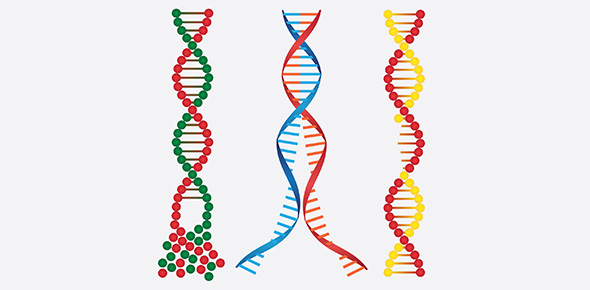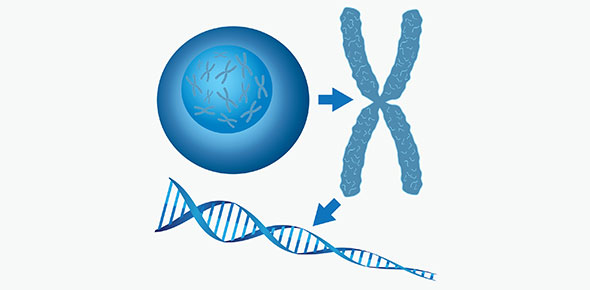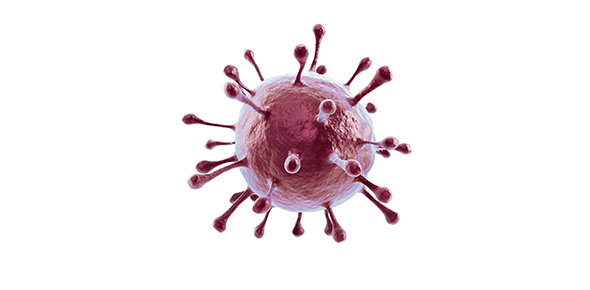Related Flashcards
Related Topics
Cards In This Set
| Front | Back |
|
What is the function of DNA polymerase III? A) to unwind the DNA helix during replication B) to seal together the broken ends of DNA strands C) to add nucleotides to the end of a growing DNA strand D) to degrade damaged DNA molecules E) to rejoin the two DNA strands (one new and one old) after replication
|
C) to add nucleotides to the end of a growing DNA strand
|
|
You briefly expose bacteria undergoing DNA replication to radioactively labeled nucleotides. When you centrifuge the DNA isolated from the bacteria, the DNA separates into two classes. One class of labeled DNA includes very large molecules (thousands or even millions of nucleotides long), and the other includes short stretches of DNA (several hundred to a few thousand nucleotides in length). These two classes of DNA probably represent A) leading strands and Okazaki fragments. B) lagging strands and Okazaki fragments. C) Okazaki fragments and RNA primers. D) leading strands and RNA primers. E) RNA primers and mitochondrial DNA.
|
A.
|
|
Hich of the following removes the RNA nucleotides from the primer and adds equivalent DNA nucleotides to the 3' end of Okazaki fragments? A) helicase B) DNA polymerase III C) ligase D) DNA polymerase I E) primase
|
D
|
|
Which of the following separates the DNA strands during replication? A) helicasa B) DNA polymerase II C) ligase D) DNA polymerase H E) primase
|
A
|
|
Which of the following covalently connects segments of DNA? A) helicase B) DNA polymerase III C) ligase D) DNA polymerase I E) primasa
|
C
|
|
Which of the following synthesies short segments of RNA? A) helicase B) DNA polymerase III C) ligase D) DNA polymerase I E) primase
|
E
|
|
The difference between ATP and the nucleoside triphosphates used during DNA synthesis is that A) the nucleoside triphosphates have the sugar deoxyribose; ATP has the sugar ribose. B) the nucleoside triphosphates have two phosphate groups; ATP has three phosphate groups. C) ATP contains three high-energy bonds; the nucleoside triphosphates have two. D) ATP is found only in human cells; the nucleoside triphosphates are found in all animaland plant cells. E) triphosphate monomers are active in the nucleoside triphosphates, but not in ATP
|
A
|
|
The leading and the lagging strands differ in that A) the leading strand is synthesized in the same direction as the movement of the replication fork, and the lagginc strand is synthesized in the opposhte direction. B) dhe leading strand is synthe3ized by adding nucleotides to the 3' end of the growing strajd, and the lagging strand is synthesized by adding nucleotides to the 5' end. C) the lagging strand is synthesized continuously, whereas the leading strand is synthesized in short fragments that are ultimately stitched together. D) the leading strand is synthesized at twice the rate of the lagging strand.
|
A
|
|
Which of the following best describes the addition of nucleotides to a growing DNA chain? A) A nucleoside triphosphate is added to the 5' end of the DNA, releasing a molecule of pyrophosphate. B) A nucleoside triphosphate is added to the 3' end of the DNA, releasing a molecule of pyrophosphate. C) A nucleoside diphosphate is added to the 5' end of the DNA, releasing a molecule of phosphate. D) A nucleoside diphosphate is added to the 3' end of the DNA, releasing a molecule of phosphate. E) A nucleoside monophosphate is added to the 5' end of the DNA.
|
B
|
|
A new DNA strand elongates only in the 5' to 3' direction because A) DNA polymerase begins adding nucleotides at the 5' end of the template. B) Okazaki fragments prevent elongation in the 3' to 5' direction. C) the polarity of the DNA molecule prevents addition of nucleotides at the 3' end. D) replication must progress toward the replication fork. E) DNA polymerase can only add nucleotides to the free 3' end.
|
E
|
|
What is the function of topoisomerase? A) relieving strain in the DNA ahead of the replication fork B) elongation of new DNA at a replication fork by addition of nucleotides to the existing chain C) the addition of methyl groups to bases of DNA D) unwinding of the double helix E) stabilizing single-stranded DNA at the replication fork
|
A
|
|
What is the role of DNA ligase in the elongation of the lagging strand during DNA replication? A) synthesize RNA nucleotides to make a primer B) catalyze the lengthening of telomeres C) join Okazaki fragments together D) unwind the parental double helix E) stabilize the unwound parental DNA
|
C
|
|
Which of the following help to hold the DNA strands apart while they are being replicated? A) primase B) ligase C) DNA polymerase D) single-strand binding proteins E) exonuclease
|
D
|
|
Individuals with the disorder xeroderma pigmentosum are hypersensitive to sunlight. This occurs because their cells have which impaired ability? A) They cannot replicate DNA. B) They cannot undergo mitosis. C) They cannot exchange DNA with other cells. D) They cannot repair thymine dimers. E) They do not recombine homologous chromosomes during meiosis.
|
D
|
|
Which would you expect of a eukaryotic cell lacking telomerase? A) a high probability of becoming cancerous B) production of Okazaki fragments C) inability to repair thymine dimers D) a reduction in chromosome length E) high sensitivity to sunlight
|
D
|







